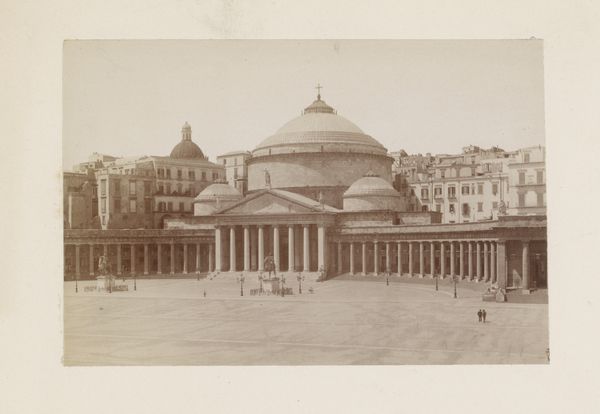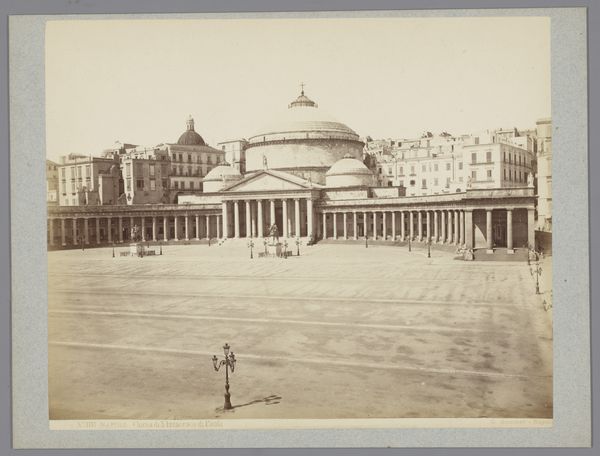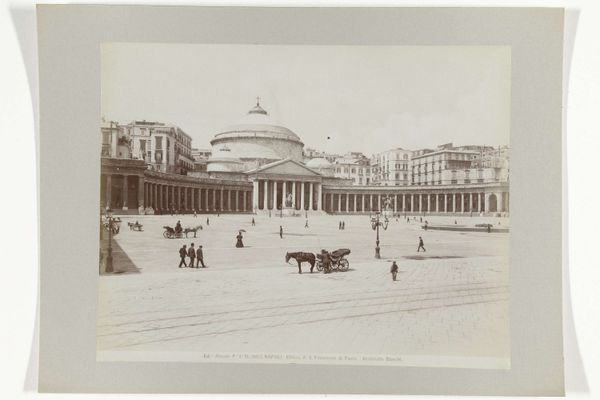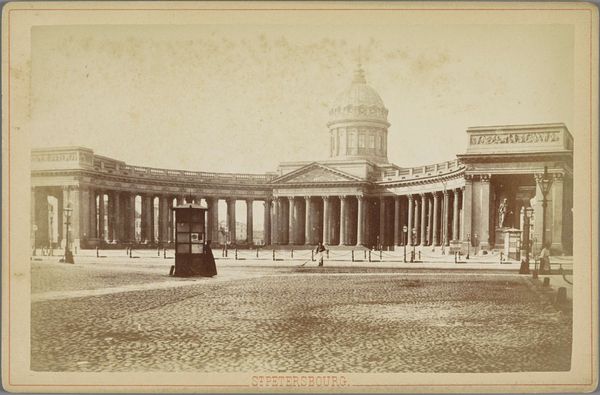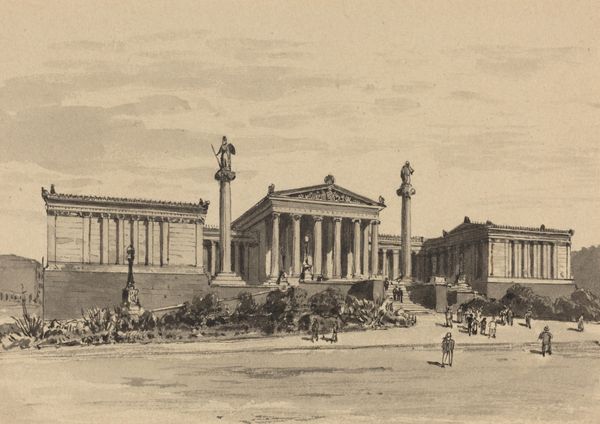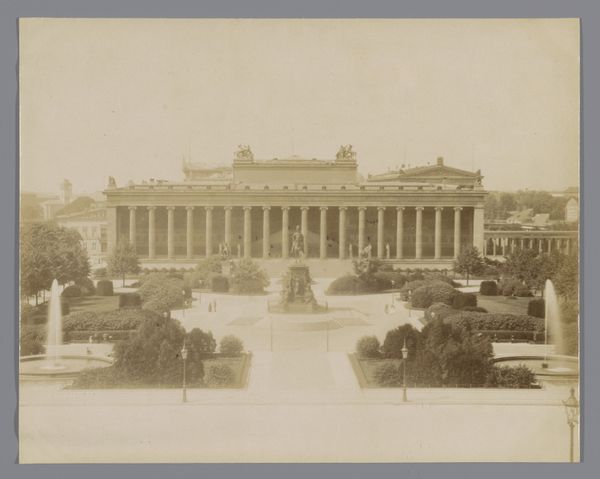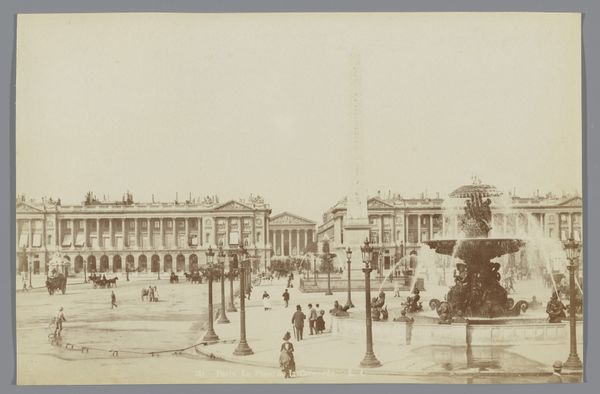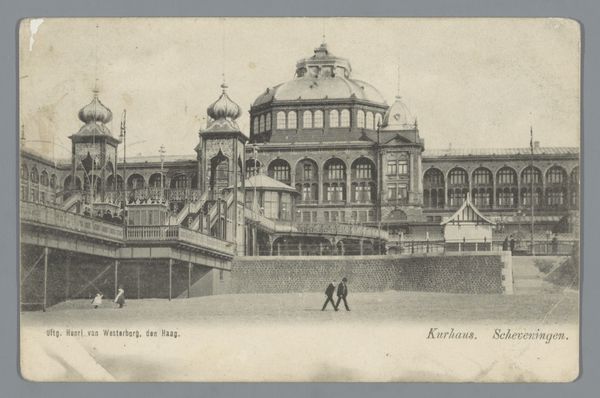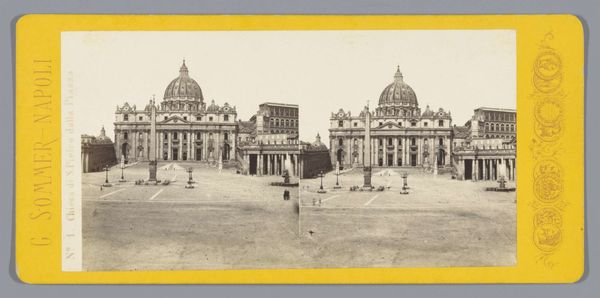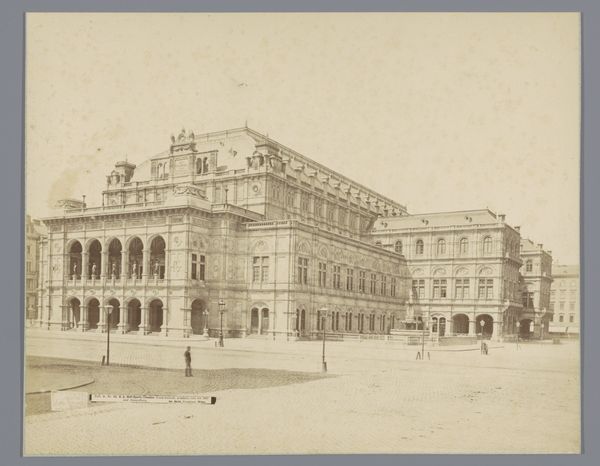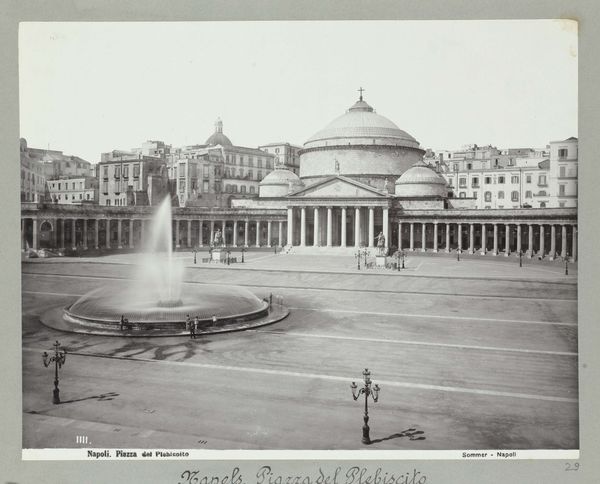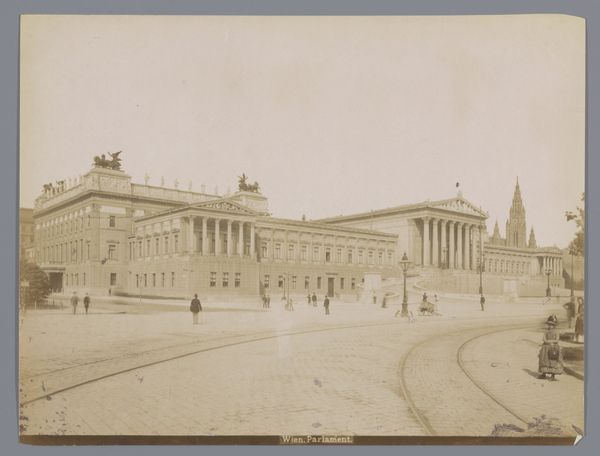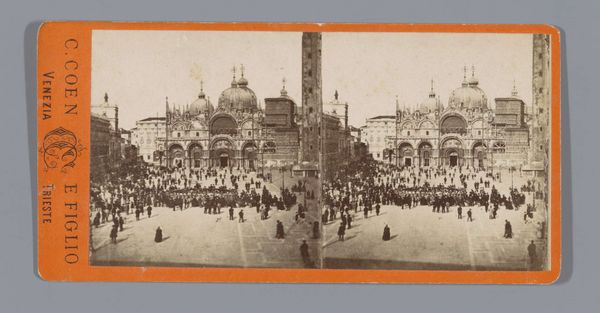
Dimensions: height 85 mm, width 176 mm
Copyright: Rijks Museum: Open Domain
Curator: Ah, yes. We have here "Gezicht op de San Francesco di Paola in Napels," a lovely albumen print taken by Giorgio Sommer sometime between 1860 and 1880. Look closely; it's a view of the San Francesco di Paola church. Editor: Immediately, I'm struck by the sheer volume of classical elements at play. Those rows of columns, the dome... It evokes a sense of monumentality, but also a certain austerity. What's your reading? Curator: Well, think about the context. Neoclassicism was a powerful movement at the time, heavily favored by ruling powers and cultural institutions for its connection with the Roman Empire, for instance. Sommer, by capturing this church and plaza, wasn’t merely documenting architecture but was also participating in shaping a visual narrative that evoked concepts of order, grandeur and authority. The construction of Piazza del Plebiscito around this very Neoclassical church was initially envisioned by Murat, Napoleon’s brother-in-law. After Murat's short reign, when the Bourbons returned to the throne of Naples, Ferdinand I continued the construction of Piazza del Plebiscito. So the plaza symbolizes both Napoleonic ambitions and Bourbon restoration. Editor: An important distinction! Visually, I'm drawn to how Sommer has used light and shadow to create a sense of depth. The strong contrast adds definition to each figure, though their forms are quite reduced within the frame. Curator: Precisely! Sommer likely understood photography as a business, making images to both create and serve a rising demand from travelers. Think of this image within a larger catalogue, feeding into existing popular images of the city and Southern Italy. These visual references also functioned to shape and influence people's perceptions of Naples. The placement of the people allows the structure itself to come across, front and center. Editor: Indeed. It allows for the eye to move around and fully engage with the architectural details. A modern viewer might think the people so anonymous and diminutive, a reminder of scale; humanity vis-a-vis ideological statement. Curator: Considering that in mind and the larger movement during its creation, this particular work demonstrates the potent intertwining of art, power, and public imagination. Editor: And from a more visual standpoint, its commitment to formal classical design with dynamic light still provides ample space for modern reinterpretation!
Comments
No comments
Be the first to comment and join the conversation on the ultimate creative platform.
